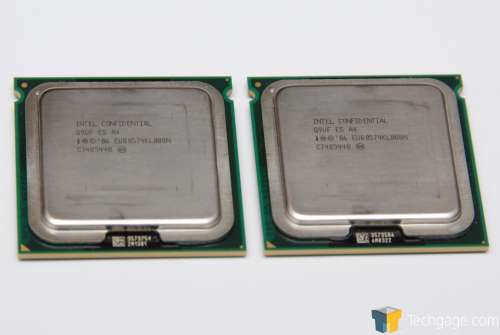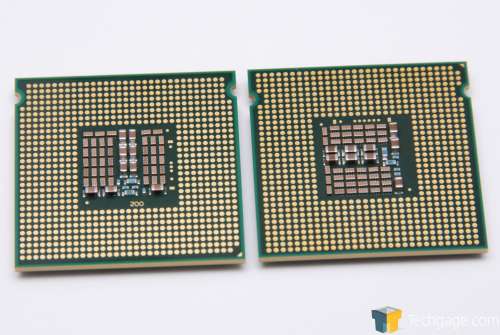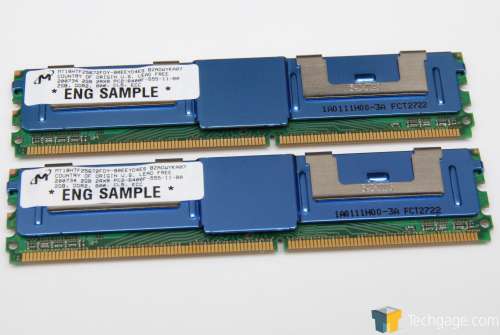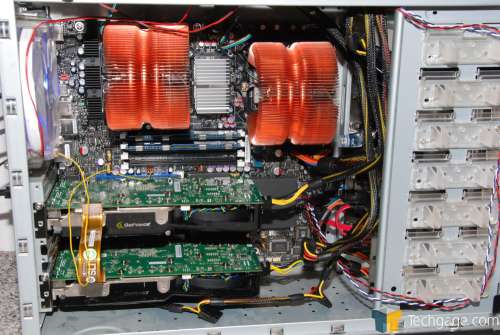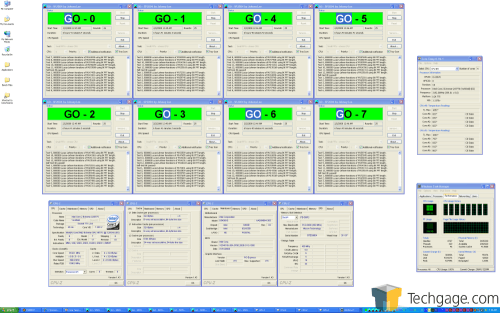- Qualcomm Launches Snapdragon 4 Gen 2 Mobile Platform
- AMD Launches Ryzen PRO 7000 Series Mobile & Desktop Platform
- Intel Launches Sleek Single-Slot Arc Pro A60 Workstation Graphics Card
- NVIDIA Announces Latest Ada Lovelace Additions: GeForce RTX 4060 Ti & RTX 4060
- Maxon Redshift With AMD Radeon GPU Rendering Support Now Available
Intel Skulltrail Enthusiast Platform Preview
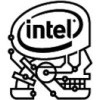
Consisting of two Extreme Quad-Core processors, Intel is looking to redefine what we know as “high-end”. Skulltrail is touted as being the “ultimate” enthusiast platform, offering SLI and Crossfire support, huge overclocking abilities and enough sheer power to make the competition weep.
Page 5 – QX9775 Quad-Core, Installation Notes
Skulltrail will be marketed with the upcoming Core 2 Extreme QX9775 Quad-Core. It’s clocked at 3.2GHz, includes a 1600MHz front-side-bus, 12MB total L2 cache, along with a TDP of 150W. These processors will require a Skulltrail motherboard to run, as they require an LGA771 socket. They may run in a standard 5400-based server board as well, but I’ve been unable to test this out. Theoretically, they should.
The server equivalent is the Xeon X5482, which notes an operating voltage of 0.975v – 1.212v. Stock voltages with the QX9775 on Skulltrail, as we will see later, hover around 1.25v when all settings are kept to stock.
|
Specification
|
C2E QX9775
|
C2E QX9770
|
C2E QX9650
|
| Socket | LGA771 | LGA775 | LGA775 |
| Frequency | 3.20GHz | 3.20GHz | 3.0GHz |
| Front-Side-Bus | 1600MHz | 1600MHz | 1333MHz |
| L2 Cache | 2 x 6MB | 2 x 6MB | 2 x 6MB |
| TDP | 150W | 136W | 130W |
| 1Ku Price (Est) | $1,499 | $1,399 | $999 |
| Availability | Q1 2008 | Q1 2008 | Now |
Pair 300W worth of CPUs and 400W worth of GPUs together, and the need for a 1000W+ power supply becomes ever clearer.
Taking a look at the back of the processors, not much differs. On the QX9775, filter caps are rotated clockwise 90°, but the count remain the same. The primary difference is the location of the notches, to make sure one is not incorrectly installed into an inappropriate motherboard.
The FB-DIMM modules Intel sent along with Skulltrail came straight from Micron. This is a 2x2GB DDR2-800 kit with 5-5-5 timings, operation with 1.8v and includes Error Correction. You can read more on these specific chips on Micron’s site, if curiosity strikes.
Production DDR2-800 FB-DIMM will be sold by Crucial, Kingston, Transcend and many others, so there should be no shortage once available. “Overclocking” kits might be sold as well, though kits of the same frequency with a CAS latency of 4 would be appreciated the most.
Installation Notes
Installing a Skulltrail platform is not much more difficult than a regular setup, but extra precaution must be taken with the parts you choose and airflow scheme.
You will need a large chassis that supports Extended ATX motherboards, which many full-towers on the market do, including SilverStone’s TJ series, Cooler Master’s Stacker, Thermaltake’s Armor/Kandalf, and so on. It’s important to purchase one that will allow you to set up the perfect airflow scheme, since two Quad-Cores can heat up the inside of a system very quickly, not surprisingly.
Ideally, a well-thought-out water-cooling setup would be the best choice, with fans strategically placed to exhaust warm air as fast as possible. In my test case, the Thermaltake Armor, there is a small 80mm on the top of the inside of the case to exhaust air, one large 120mm in the back, and I also have one “ghetto-modded” in the front inside, which sucks in air and blows it through to the back.
To have superb airflow, a power supply with modular connections might be a good bet, although depending on personal skepticism, you may want to avoid units that offer modular PCI-E cables. GPUs are an expensive investment, and you don’t want to risk anything.
Intel’s PSU recommendations are generous, so you might be able to get away with a slightly smaller model than what’s mentioned below, but you don’t want to get too carried away.
- Intel Skulltrail PSU Recommendations
- 4GB Memory, 2 Graphic Cards, 2 CPUs: ~1000W
- 8GB Memory, 4 Graphic Cards, 2 CPUs: ~1400W
Depending on the GPUs you plan to use, the PSU size could vary. Two HD 3870 X2’s will suck a lot more power than two 8800GT’s, for example.
Cooling is the final thing to consider. Air might be the most common choice given the fact that many custom-made dual-CPU water-cooling kits do not exist, but the latter will still be the best choice, especially with overclocking. Overclocking on air with such beefy processors is not a good idea and shouldn’t be considered, unless they push incredible air, and even then, the overclock should be minor.
Intel sent along two Zalman 9700 CPU coolers to use in our rigs, which you can see in use above, and in a warm room (78°F), the CPU temperatures didn’t go above 88°C during full load over a seven-hour period. Though still high, it’s common of high-clocked Quad-Cores, and considering it was in a room with higher-than-normal room temperature, it shows that such a rig would be fine on air.
I think we’ve covered all our bases here, so we can continue on to our testing methodology, then see how Skulltrail compares to all of our recent processors. Following that, we will have specific Skulltrail tests to see how eight-cores can be fully taken advantage of.
Support our efforts! With ad revenue at an all-time low for written websites, we're relying more than ever on reader support to help us continue putting so much effort into this type of content. You can support us by becoming a Patron, or by using our Amazon shopping affiliate links listed through our articles. Thanks for your support!




